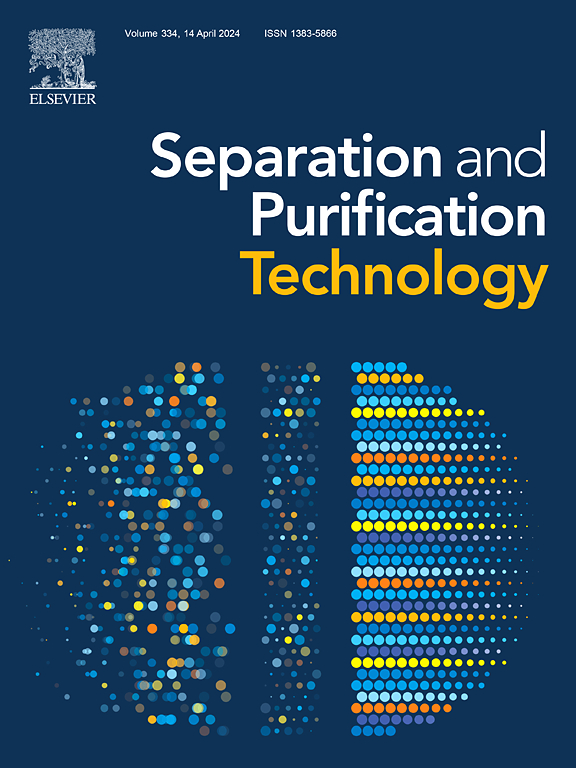Insights into enhancement of low-temperature NH3-SCR activity and SO2 resistance of TiO2/CoMnFeOx LDOs catalysts: Combination of experimental and DFT calculations
IF 8.1
1区 工程技术
Q1 ENGINEERING, CHEMICAL
引用次数: 0
Abstract
Layered double hydroxides (LDHs) material was used as a precursor, and combined with TiO2 material characteristics, TiO2/CoMnFeOx LDOs composite material was controllable prepared for NH3-SCR denitration technology. At a wide temperature range of 200-300℃, the optimized TiO2(0.5)/Co0.5Mn1.5Fe1Ox catalyst had denitration efficiency exceeding 98 %, and N2 selectivity exceeding 85 % at 200℃. Advanced analytical techniques explored the structure and physicochemical properties of the catalyst materials, and the abundant active species and surface oxygen, moderate surface acids and redox capacity together promoted the NH3-SCR reaction. The transient reaction revealed that the TiO2(0.5)/Co0.5Mn1.5Fe1Ox catalyst reduced the production of N2O by inhibiting the “NH3 + O2 + NOx” pathway. Moreover, TiO2(0.5)/Co0.5Mn1.5Fe1Ox catalyst exhibited good resistance stability against SO2 and H2O. In situ DRIFTS analysis and DFT calculations provide insight into the mechanism of catalytic reaction and resistance to poisoning. This work provided strategies for improving the NH3-SCR activity and application stability of catalysts, which were important for the development of low-temperature denitration technology.

求助全文
约1分钟内获得全文
求助全文
来源期刊

Separation and Purification Technology
工程技术-工程:化工
CiteScore
14.00
自引率
12.80%
发文量
2347
审稿时长
43 days
期刊介绍:
Separation and Purification Technology is a premier journal committed to sharing innovative methods for separation and purification in chemical and environmental engineering, encompassing both homogeneous solutions and heterogeneous mixtures. Our scope includes the separation and/or purification of liquids, vapors, and gases, as well as carbon capture and separation techniques. However, it's important to note that methods solely intended for analytical purposes are not within the scope of the journal. Additionally, disciplines such as soil science, polymer science, and metallurgy fall outside the purview of Separation and Purification Technology. Join us in advancing the field of separation and purification methods for sustainable solutions in chemical and environmental engineering.
 求助内容:
求助内容: 应助结果提醒方式:
应助结果提醒方式:


